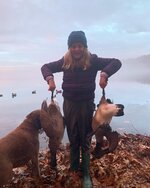I get the idea, but bowhunting rutting elk and rifle hunting migrating elk are two very different tasks that take very different skills.
I agree with this very much. If you have a rifle rut tag, yes, it can be very simple( but not as easy as you'd think sometimes, just never know).
But a mid October to late November bull hunt is VERY different than rut archery hunt in the country I hunt.
There's two parts to killing a bull I feel.
#1 - Finding the bulls: You need to find elk to start "hunting them. This is often the hardest part of course. They are often in the nastiest deadfall, or craggy canyons that don't have huge parks or brushy pastures you can glass. You often have to dig into these places on a guess the first time and can sometimes short range glass across a canyon or whatever but have to settle for basically watching one or several small pocket parks to see if they step out. They usually live a small life after the rut ,until migration.
They need food and security and will give up some food quality for more security. They do browse brush a lot, especially later, they love grass of course but eat a larger variety than some you might hear.
#2 Hunting the bulls: if you find fresh sign or glass one too far away to make a play that day. Be there way before first light waiting. Tracking them in fresh snow is my absolute favorite way to go after them if an ambush doesn't work. But be aware if you blow them out , they often go and don't come back. So if you have multiple days left , try the stealth approach for whatever shot your comfortable with. Being on the same slope as them is often tough but sometimes perfect.
Sometimes a cross canyon shot is close enough and the best. All depends.
Once you find elk, they are far easier to put on the ground than big mature whitetails your used to.
Finding them is the hard part, especially in big timber country, no snow, warm weather, no bugling, lots of pressure, etc. They just don't move much most of the time.

